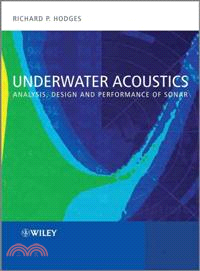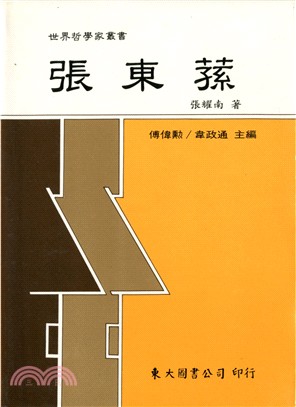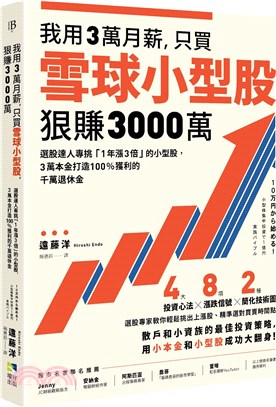Underwater Acoustics - Analysis, Design And Performance Of Sonar
商品資訊
定價
:NT$ 9178 元優惠價
:90 折 8260 元
若需訂購本書,請電洽客服 02-25006600[分機130、131]。
相關商品
商品簡介
作者簡介
目次
商品簡介
Offering complete and comprehensive coverage of modern sonar spectrum system analysis, Underwater Acoustics: Analysis, Design and Performance of Sonar provides a state-of-the-art introduction to the subject and has been carefully structured to offer a much-needed update to the classic text by Urick. Expanded to included computational approaches to the topic, this book treads the line between the highly theoretical and mathematical texts and the more populist, non-mathematical books that characterize the existing literature in the field. The author compares and contrasts different techniques for sonar design, analysis and performance prediction and includes key experimental and theoretical results, pointing the reader towards further detail with extensive references. Practitioners in the field of sonar design, analysis and performance prediction as well as graduate students and researchers will appreciate this new reference as an invaluable and timely contribution to the field.
Chapters include the sonar equation, radiated, self and ambient noise, active sonar sources, transmission loss, reverberation, transducers, active target strength, statistical detection theory, false alarms, contacts and targets, variability and uncertainty, modelling detections and tactical decision aids, cumulative probability of detection, tracking target motion analysis and localization, and design and evaluation of sonars
Chapters include the sonar equation, radiated, self and ambient noise, active sonar sources, transmission loss, reverberation, transducers, active target strength, statistical detection theory, false alarms, contacts and targets, variability and uncertainty, modelling detections and tactical decision aids, cumulative probability of detection, tracking target motion analysis and localization, and design and evaluation of sonars
作者簡介
RICHARD P. HODGES has forty years experience in sonar, operations analysis, modeling, and the simulation of military systems. He is currently working for Sonalysts, Inc as a principal analyst, and is a member of the Acoustic Society of America. He has taught courses at the Naval Underwater Warfare Center (NUWC) and elsewhere in naval analysis of sonar, acoustics, TMA, tactics, weapons, damage and kill mechanisms, C4I, non-acoustic sensors, platform dynamics weapons, tactics and on the use of NUWC's SIM II Naval Engagement Simulation.
目次
About the Author.
Preface.
Acknowledgements.
1 Introduction to Sonar.
1.1 Acoustic Waves.
1.2 Speed of Propagation.
1.3 Acoustic Wave Parameters.
1.4 Doppler Shift.
1.5 Intensity, SPL, and Decibels.
1.6 Combining Acoustic Waves.
1.7 Comparative Parameter for Sound in Water and Air.
References.
2 The Sonar Equations.
2.1 Signal-to-Noise Ratio.
2.2 Active Sonar Equation.
2.3 Signal Excess.
2.4 Figure of Merit.
References.
3 Transducers, Directionality, and Arrays.
3.1 Transducer Response.
3.2 Beam Pattern Response.
3.3 Linear Arrays.
3.4 Rectangular Planar Array.
3.5 Amplitude Shading.
3.6 Continuous Arrays.
3.7 Volumetric Arrays.
3.8 Product Theorem.
3.9 Broadband Beam Patterns.
3.10 Directivity and Array Gain.
3.11 Noise Cross-Correlation between Hydrophones.
3.12 Directivity of Line Arrays.
3.13 Directivity of Area Arrays.
3.14 Directivity of Volumetric Arrays.
3.15 Difference Arrays.
3.16 Multiplicative Arrays.
3.17 Sparsely Populated Arrays.
3.18 Adaptive Beamforming.
References.
4 Active Sonar Sources.
4.1 Source Level.
4.2 Cavitation.
4.3 Near-Field Interactions.
4.4 Explosive Sources.
4.5 Physics of Shock Waves in Water.
4.6 Bubble Pulses.
4.7 Pros and Cons of Explosive Charges.
4.8 Parametric Acoustic Sources.
References.
5 Transmission Loss.
5.1 Sound Speed Profile in the Sea.
5.2 Snell s Law and Transmission across an Interface.
5.3 Reflection and Transmission Coefficients.
5.4 Transmission through a Plate.
5.5 Ray Tracing.
5.6 Spreading Loss.
5.7 Absorption of Sound in the Ocean.
References.
6 Transmission Loss: Interaction with Boundaries.
6.1 Sea State, Wind Speed, and Wave Height.
6.2 Pierson Moskowitz Model for Fully Developed Seas.
6.3 Sea Surface Interaction.
6.4 Bottom Loss.
6.5 Leakage Out of a Duct, Low-Frequency Cutoff.
6.6 Propagation Loss Model Descriptions.
References.
7 Ambient Noise.
7.1 Ambient Noise Models.
7.2 Seismic Noise.
7.3 Ocean Turbulence.
7.4 Shipping Noise.
7.5 Wave Noise.
7.6 Thermal Noise.
7.7 Rain Noise.
7.8 Temporal Variability of Ambient Noise.
7.9 Depth Effects on Noise.
7.10 Directionality of Noise.
7.11 Under Ice Noise.
7.12 Spatial Coherence of Ambient Noise.
References.
8 Reverberation.
8.1 Scattering, Backscattering Strength, and Target Strength.
8.2 Reverberation Frequency Spread and Doppler Gain Potential.
8.3 Important Observation with Respect to Reverberation.
References.
9 Active Target Strength.
9.1 Target Strength Definition.
9.2 Active Target Strength of a Large Sphere.
9.3 Active Target Strength of a Very Small Sphere.
9.4 Target Strengths of Simple Geometric Forms.
9.5 Target Strength of Submarines.
9.6 The TAP Model.
9.7 Target Strength of Surface Ships.
9.8 Target Strength of Mines and Torpedoes.
9.9 Target Strength of Fish.
References.
10 Radiated Noise.
10.1 General Characteristics of Ship Radiated Noise.
10.2 Propeller Radiated Noise.
10.3 Machinery Noise.
10.4 Resonance Noise.
10.5 Hydrodynamic Noise.
10.6 Platform Quieting.
10.7 Total Radiated Noise.
Reference.
11 Self Noise.
11.1 Flow Noise.
11.2 Turbulent Noise Coherence.
11.3 Strumming Noise.
References.
12 Statistical Detection Theory.
12.1 Introduction.
12.2 Case 1: Signal Is Known Exactly.
12.3 Case 2: Signal Is White Gaussian Noise.
References.
13 Methodology for Calculation of the Recognition Differential.
13.1 Continuous Broadband Signals (PBB).
13.2 Continuous Narrowband Signals (PNB).
13.3 Active Sonar.
13.4 Aural Detection.
13.5 Display Nomenclature.
References.
14 False Alarms, False Contacts, and False Targets.
14.1 Sea Story.
14.2 Failure to Detect.
14.3 Detection Theory.
14.4 False Alarm Probability Calculation.
14.5 False/Nonthreat Contacts.
14.6 False Targets.
14.7 Summary and Conclusions.
References.
15 Variability and Uncertainty.
15.1 Random Variability of a Sonar.
15.2 Sources of Variability.
References.
16 Modeling Detection and Tactical Decision Aids.
16.1 Figure of Merit Range or R50 %.
16.2 Tactical Decision Aids.
References.
17 Cumulative Probability of Detection.
17.1 Why is CPD Important?
17.2 Discrete Glimpse and Continuous Looking.
17.3 Lambda Sigma Jump Model.
17.4 Nonjump Processes.
17.5 What Are Appropriate Random Parameters?
17.6 Approximation Method for Computation of the Cumulative Probability of Detection (CPD).
References.
18 Tracking, Target Motion Analysis, and Localization.
18.1 Bearing Trackers.
18.2 General Principle of Tracking and Bearing Measurement.
18.3 Other Sources of Bearing Error for Area Arrays.
18.4 Additional Sources of Errors for Line Arrays.
18.5 Bottom Bounce.
18.6 Manual versus Automatic Tracking.
18.7 Localization and Target Motion Analysis.
18.8 Bearings Only Methodologies.
18.9 Four-Bearing TMA.
18.10 Ekelund Ranging.
18.11 Range and Bearing TMA.
18.12 Other Bearings Only TMA Methodologies.
18.13 Other TMA and Localization Schemes.
References.
19 Design and Evaluation of Sonars.
19.1 Choice of Frequency and Size.
19.2 Computational Requirements.
19.3 Signal Processing after Beamformer.
19.4 Active Pulse Choice.
19.5 Monostatic, Bistatic, and Multistatic Active Sonars.
19.6 Ambiguity Functions.
19.7 Mine Hunting and Bottom Survey Sonars.
19.8 Echo Sounding and Fishing Sonars.
19.9 Navigation.
19.10 Vehicle Location and At-Sea Rescue.
19.11 Intercept Receivers.
19.12 Communications.
19.13 Marine Mammals and Active Sonar.
References.
A Fourier Transforms.
A.1 Definitions.
A.2 Parseval s Theorem and Plancherel's Theorem.
A.3 Properties of Fourier Transforms.
A.4 Localization or Uncertainty Property.
B Analysis of Errors Associated with a Least Squares Methodology.
Reference.
Index.
Preface.
Acknowledgements.
1 Introduction to Sonar.
1.1 Acoustic Waves.
1.2 Speed of Propagation.
1.3 Acoustic Wave Parameters.
1.4 Doppler Shift.
1.5 Intensity, SPL, and Decibels.
1.6 Combining Acoustic Waves.
1.7 Comparative Parameter for Sound in Water and Air.
References.
2 The Sonar Equations.
2.1 Signal-to-Noise Ratio.
2.2 Active Sonar Equation.
2.3 Signal Excess.
2.4 Figure of Merit.
References.
3 Transducers, Directionality, and Arrays.
3.1 Transducer Response.
3.2 Beam Pattern Response.
3.3 Linear Arrays.
3.4 Rectangular Planar Array.
3.5 Amplitude Shading.
3.6 Continuous Arrays.
3.7 Volumetric Arrays.
3.8 Product Theorem.
3.9 Broadband Beam Patterns.
3.10 Directivity and Array Gain.
3.11 Noise Cross-Correlation between Hydrophones.
3.12 Directivity of Line Arrays.
3.13 Directivity of Area Arrays.
3.14 Directivity of Volumetric Arrays.
3.15 Difference Arrays.
3.16 Multiplicative Arrays.
3.17 Sparsely Populated Arrays.
3.18 Adaptive Beamforming.
References.
4 Active Sonar Sources.
4.1 Source Level.
4.2 Cavitation.
4.3 Near-Field Interactions.
4.4 Explosive Sources.
4.5 Physics of Shock Waves in Water.
4.6 Bubble Pulses.
4.7 Pros and Cons of Explosive Charges.
4.8 Parametric Acoustic Sources.
References.
5 Transmission Loss.
5.1 Sound Speed Profile in the Sea.
5.2 Snell s Law and Transmission across an Interface.
5.3 Reflection and Transmission Coefficients.
5.4 Transmission through a Plate.
5.5 Ray Tracing.
5.6 Spreading Loss.
5.7 Absorption of Sound in the Ocean.
References.
6 Transmission Loss: Interaction with Boundaries.
6.1 Sea State, Wind Speed, and Wave Height.
6.2 Pierson Moskowitz Model for Fully Developed Seas.
6.3 Sea Surface Interaction.
6.4 Bottom Loss.
6.5 Leakage Out of a Duct, Low-Frequency Cutoff.
6.6 Propagation Loss Model Descriptions.
References.
7 Ambient Noise.
7.1 Ambient Noise Models.
7.2 Seismic Noise.
7.3 Ocean Turbulence.
7.4 Shipping Noise.
7.5 Wave Noise.
7.6 Thermal Noise.
7.7 Rain Noise.
7.8 Temporal Variability of Ambient Noise.
7.9 Depth Effects on Noise.
7.10 Directionality of Noise.
7.11 Under Ice Noise.
7.12 Spatial Coherence of Ambient Noise.
References.
8 Reverberation.
8.1 Scattering, Backscattering Strength, and Target Strength.
8.2 Reverberation Frequency Spread and Doppler Gain Potential.
8.3 Important Observation with Respect to Reverberation.
References.
9 Active Target Strength.
9.1 Target Strength Definition.
9.2 Active Target Strength of a Large Sphere.
9.3 Active Target Strength of a Very Small Sphere.
9.4 Target Strengths of Simple Geometric Forms.
9.5 Target Strength of Submarines.
9.6 The TAP Model.
9.7 Target Strength of Surface Ships.
9.8 Target Strength of Mines and Torpedoes.
9.9 Target Strength of Fish.
References.
10 Radiated Noise.
10.1 General Characteristics of Ship Radiated Noise.
10.2 Propeller Radiated Noise.
10.3 Machinery Noise.
10.4 Resonance Noise.
10.5 Hydrodynamic Noise.
10.6 Platform Quieting.
10.7 Total Radiated Noise.
Reference.
11 Self Noise.
11.1 Flow Noise.
11.2 Turbulent Noise Coherence.
11.3 Strumming Noise.
References.
12 Statistical Detection Theory.
12.1 Introduction.
12.2 Case 1: Signal Is Known Exactly.
12.3 Case 2: Signal Is White Gaussian Noise.
References.
13 Methodology for Calculation of the Recognition Differential.
13.1 Continuous Broadband Signals (PBB).
13.2 Continuous Narrowband Signals (PNB).
13.3 Active Sonar.
13.4 Aural Detection.
13.5 Display Nomenclature.
References.
14 False Alarms, False Contacts, and False Targets.
14.1 Sea Story.
14.2 Failure to Detect.
14.3 Detection Theory.
14.4 False Alarm Probability Calculation.
14.5 False/Nonthreat Contacts.
14.6 False Targets.
14.7 Summary and Conclusions.
References.
15 Variability and Uncertainty.
15.1 Random Variability of a Sonar.
15.2 Sources of Variability.
References.
16 Modeling Detection and Tactical Decision Aids.
16.1 Figure of Merit Range or R50 %.
16.2 Tactical Decision Aids.
References.
17 Cumulative Probability of Detection.
17.1 Why is CPD Important?
17.2 Discrete Glimpse and Continuous Looking.
17.3 Lambda Sigma Jump Model.
17.4 Nonjump Processes.
17.5 What Are Appropriate Random Parameters?
17.6 Approximation Method for Computation of the Cumulative Probability of Detection (CPD).
References.
18 Tracking, Target Motion Analysis, and Localization.
18.1 Bearing Trackers.
18.2 General Principle of Tracking and Bearing Measurement.
18.3 Other Sources of Bearing Error for Area Arrays.
18.4 Additional Sources of Errors for Line Arrays.
18.5 Bottom Bounce.
18.6 Manual versus Automatic Tracking.
18.7 Localization and Target Motion Analysis.
18.8 Bearings Only Methodologies.
18.9 Four-Bearing TMA.
18.10 Ekelund Ranging.
18.11 Range and Bearing TMA.
18.12 Other Bearings Only TMA Methodologies.
18.13 Other TMA and Localization Schemes.
References.
19 Design and Evaluation of Sonars.
19.1 Choice of Frequency and Size.
19.2 Computational Requirements.
19.3 Signal Processing after Beamformer.
19.4 Active Pulse Choice.
19.5 Monostatic, Bistatic, and Multistatic Active Sonars.
19.6 Ambiguity Functions.
19.7 Mine Hunting and Bottom Survey Sonars.
19.8 Echo Sounding and Fishing Sonars.
19.9 Navigation.
19.10 Vehicle Location and At-Sea Rescue.
19.11 Intercept Receivers.
19.12 Communications.
19.13 Marine Mammals and Active Sonar.
References.
A Fourier Transforms.
A.1 Definitions.
A.2 Parseval s Theorem and Plancherel's Theorem.
A.3 Properties of Fourier Transforms.
A.4 Localization or Uncertainty Property.
B Analysis of Errors Associated with a Least Squares Methodology.
Reference.
Index.
主題書展
更多
主題書展
更多書展本週66折
您曾經瀏覽過的商品
購物須知
外文書商品之書封,為出版社提供之樣本。實際出貨商品,以出版社所提供之現有版本為主。部份書籍,因出版社供應狀況特殊,匯率將依實際狀況做調整。
無庫存之商品,在您完成訂單程序之後,將以空運的方式為你下單調貨。為了縮短等待的時間,建議您將外文書與其他商品分開下單,以獲得最快的取貨速度,平均調貨時間為1~2個月。
為了保護您的權益,「三民網路書店」提供會員七日商品鑑賞期(收到商品為起始日)。
若要辦理退貨,請在商品鑑賞期內寄回,且商品必須是全新狀態與完整包裝(商品、附件、發票、隨貨贈品等)否則恕不接受退貨。
























